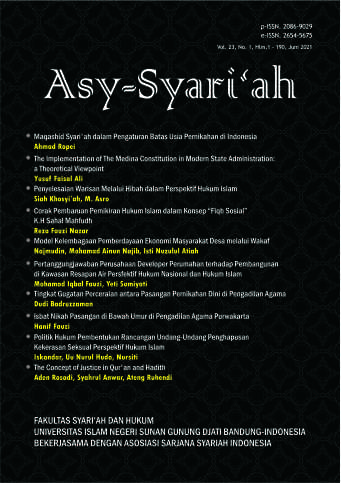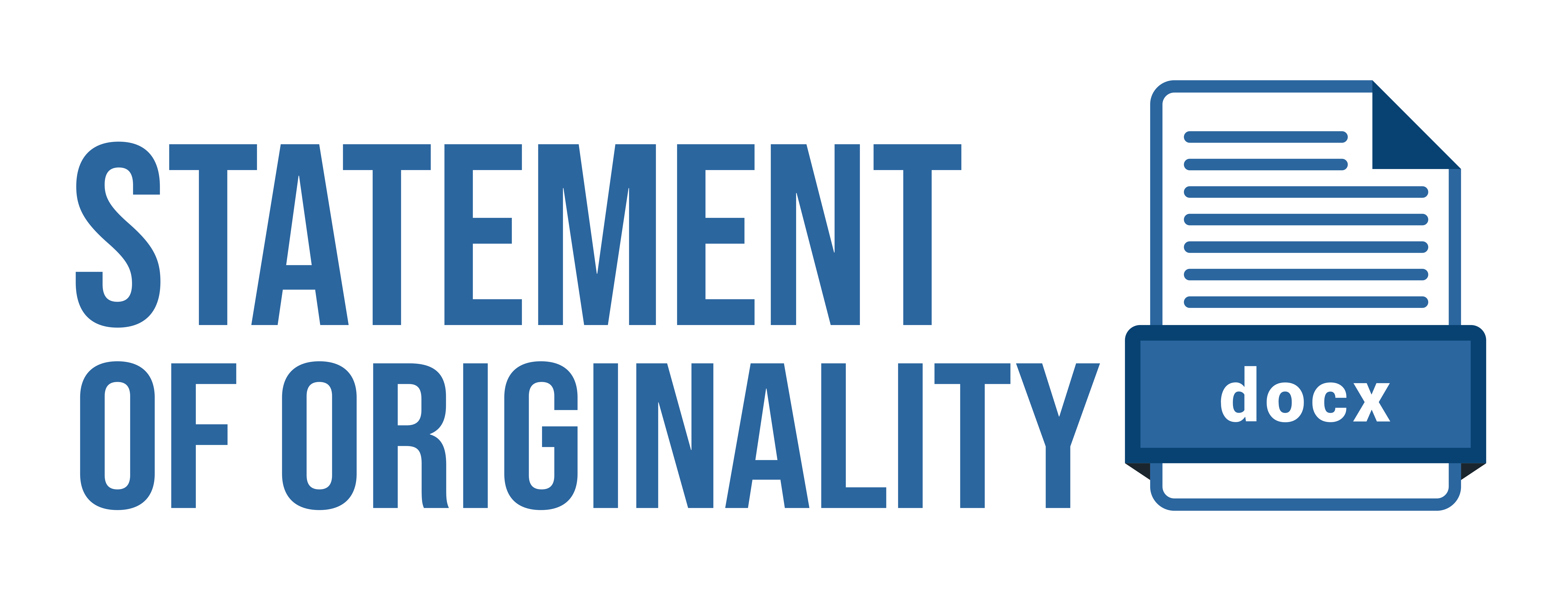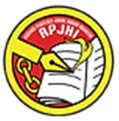Reconstruction of Moon Phases and Period in The Book of Enoch on Islamic Astronomy Perspective
DOI:
https://doi.org/10.15575/as.v26i1.35595Keywords:
Book of Enoch, Islamic Astronomy, Moon Phases, Moon PeriodAbstract
References
Asherit. “Interview with Asherit,” 2021.
Azhari, Susiknan. Ensiklopedi Hisab Rukyat. 3rd ed. Yogyakarta: Pustaka Pelajar, 2012.
Azkarrula, Youla Afifah, Susanne M Hoffmann, and Ahmad Izzuddin. “Examining the Impact of the Book of Enoch , Sefer Yetzirah , and Greek Civilization on the Jewish Calendar System : An Islamic Astronomical Law Perspective.” JIL: Journal of Islamic Law 4, no. 1 (2023): 1–27. https://doi.org/10.24260/jil.v4i1.1153.
Azkarrula, Youla Afifah, and Ahmad Izzuddin. “An Analytical Study of the Duration of Daylight in the Book of Enoch.” Edited by Gudrun Wolfschmidt and Susanne M Hoffman. Astronomy in Culture--Cultures of Astronomy. Astronomie in Der Kultur--Kulturen Der Astronomie.: Featuring the Proceedings of the Splinter Meeting at the Annual Conference of the Astronomische Gesellschaft 57 (2021).
Barkin, M. Yu, and P. M. Shkapov. “On The Motion Period Of The Rotation Axis Pole In The Case Of An Elastic Moon.” Herald of the Bauman Moscow State Technical University, Series Natural Sciences, no. 5 (2022). https://doi.org/10.18698/1812-3368-2022-5-4-15.
Bautista-Covarrubias, Juan Carlos, Patricia Anely Zamora-Ibarra, Elizabeth Apreza-Burgos, Angélica Nallelhy Rodríguez-Ocampo, Viridiana Peraza-Gómez, José Armando López-Sánchez, Juan Manuel Pacheco-Vega, Juan Pablo González-Hermoso, and Martín Gabriel Frías-Espericueta. “Immune Response and Oxidative Stress of Shrimp Litopenaeus Vannamei at Different Moon Phases.” Fish and Shellfish Immunology 106 (2020). https://doi.org/10.1016/j.fsi.2020.08.040.
Charles, R H. The Book of Enoch Translated by R. H. Charles, D.Litt., D.D. With an Introduction by W. O. E. Oesterley, D.D. London: Society for Promoting Christian Knowledge, 1917.
Dbachmann. “Depiction of Metonic Cycle.” World History Encyclopedia, 2015.
DePree, Christopher, and Alan Axelrod. The Complete Idiots Guide to Astronomy. 2nd ed. United Stated of America: Pearson Education, Inc, 2001.
Drawnel, Henryk. “Moon Computation in the Aramaic Astronomical Book.” Revue de Qumran 89, no. 1 (2007): 3–42.
Emas, Ni Putu Audita Placida, Alif Husnul Fikri, and Rendy Darma. “The Pengalantaka Eka Sungsang Ka Paing System and a Diagram for Determining Purnama and Tilem in the Balinese Calendar,” 2021. https://doi.org/10.1007/978-3-030-62777-5_20.
Fotheringham., J. K. “The Metonic and Callippic Cycles.” Monthly Notices of the Royal Astronomical Society 84, no. 5 (1924): 383–92. https://doi.org/10.1093/mnras/84.5.383.
Freeth, T., Y. Bitsakis, X. Moussas, J. H. Seiradakis, A. Tselikas, H. Mangou, M. Zafeiropoulou, et al. “Decoding the Ancient Greek Astronomical Calculator Known as the Antikythera Mechanism.” Nature 444, no. 7119 (2006): 587–91. https://doi.org/10.1038/nature05357.
French, Lindsay A., Stephen R. Midway, David H. Evans, and George H. Burgess. “Shark Side of the Moon: Are Shark Attacks Related to Lunar Phase?” Frontiers in Marine Science, no. 8 (2021). https://doi.org/10.3389/fmars.2021.745221.
Gibilisco, Stan. Astronomy Demistified. United Stated of America: McGraw-Hill, 2003.
Institute, Scriptural Research. 3rd Enoch: Astronomical Book. United Kingdom: Digital Ink Production, 2020.
Itani, Talal A. The Quran Translated to English. Beirut: ClearQuran, 2012.
Jacobus, Helen R. “Reconstructing the Calendar of 4Q208-4Q209 (and a Response to Eshbal Ratzon).” Revue de Qumran, 2019. https://doi.org/10.2143/RQ.31.2.3287242.
———. “The Babylonian Lunar Three and the Qumran Calendars of the Priestly Courses: A Response.” Revue de Qumran, 2013.
Karuwal, J., and B. Budiman. “The Influence of Moon Period Day to Paperek Fish (Leiognathus Spp) Cathed and It’s Connection with Physical Waters of Boat Live Nets at Dodinga Bay, West Halmahera Districs.” In IOP Conference Series: Earth and Environmental Science, 2021. https://doi.org/10.1088/1755-1315/797/1/012003.
Kotyk, Jeffrey. “The Chinese Buddhist Approach to Science: The Case of Astronomy and Calendars.” Journal of Dharma Studies 3, no. 2 (2020): 273–89. https://doi.org/10.1007/s42240-020-00082-y.
Linley, G. D., Y. Pauligk, C. Marneweck, and E. G. Ritchie. “Moon Phase and Nocturnal Activity of Native Australian Mammals.” Australian Mammalogy 43, no. 2 (2021). https://doi.org/10.1071/AM19070.
Manafe, Riscky A P. “Ibadah Bulan Purnama (Study Sosio-Teologis Ibadah Bulan Purnama Di Jemaat GMIM Nafiri Telap).” Universitas Kristen Satya Wacana Salatiga, 2015.
Peeva, Stanislava, Evgeniy Raichev, Dilian Georgiev, Yanko Yankov, Hiroshi Tsunoda, and Yayoi Kaneko. “European Badger’s Mating Activities Associated with Moon Phase.” Journal of Ethology 41, no. 1 (2023). https://doi.org/10.1007/s10164-022-00762-1.
Pérez-Granados, Cristian, Karl L. Schuchmann, and Marinez I. Marques. “Addicted to the Moon: Vocal Output and Diel Pattern of Vocal Activity in Two Neotropical Nightjars Is Related to Moon Phase.” Ethology Ecology and Evolution 34, no. 1 (2022). https://doi.org/10.1080/03949370.2021.1886182.
———. “Vocal Activity of the Ferruginous Pygmy-Owl (Glaucidium Brasilianum) Is Strongly Correlated with Moon Phase and Nocturnal Temperature.” Ethology Ecology and Evolution 33, no. 1 (2021). https://doi.org/10.1080/03949370.2020.1820582.
Ratson, Eshbal. “4Q208: A New Reconstruction and Its Implications on the Evolution of the Astronomical Book.” Revue de Qumran 31, no. 1 (2019). https://doi.org/10.2143/RQ.31.1.3286505.
Ratzon, Eshbal. “The First Jewish Astronomers: Lunar Theory and Reconstruction of a Dead Sea Scroll.” In Science in Context, 2017. https://doi.org/10.1017/S0269889717000114.
Reddy, Anuradha. “Islamic Geometry-Based Moon-Period Calendar and Interaction Design.” Interactions 30, no. 3 (2023). https://doi.org/10.1145/3592461.
Reed, Annette Yoshiko. “Writing Jewish Astronomy in the Early Hellenistic Age: The Enochic Astronomical Book as Aramaic Wisdom & Archival Impulse.” Dead Sea Discoveries, 2017. https://doi.org/10.1163/15685179-12341412.
Seed, Michael A, and Dana E Backman. Astronomy The Solar System and Beyond. 6th ed. United Stated of America: Brooks/Cole, 2010.
Suharyanto, Mohammad K. Arifin, Jerry Hutajulu, Ali S. Waluyo, Yusrizal, Muhammad Handri, Aman Saputra, Abdul Basith, Erick Nugraha, and Sepri. “The Effect of Moon Phases upon Purse Seine Pelagic Fish Catches in Fisheries Management Area (Fma) 716, Indonesia.” AACL Bioflux 13, no. 6 (2020).
University, Swinburne. “Callippus.” Study Astronomy Online at Swinburne University, n.d.
Yamashina, Fumika, Yafan Zhu, Yuki Takeuchi, Chihiro Yamauchi, Kodai Fukunaga, Shingo Udagawa, and Akihiro Takemura. “Darkness at Night during the New Moon Period Alters the Expression Levels of the Clock Genes in the Brain of a Moon-Related Spawner, the Malabar Grouper Epinephelus Malabaricus.” Biological Rhythm Research, 2023. https://doi.org/10.1080/09291016.2023.2247801.
Downloads
Published
How to Cite
Issue
Section
Citation Check
License
Copyright (c) 2024 Youla Afifah Azkarrula, Ahmad Syifaul Anam

This work is licensed under a Creative Commons Attribution-ShareAlike 4.0 International License.
The author whose published manuscript approved the following provisions:
- Authors retain copyright and grant the journal right of first publication with the work simultaneously licensed under a Attribution-ShareAlike 4.0 International (CC BY-SA 4.0) License that allows others to share the work with an acknowledgment of the work's authorship and initial publication in this journal.
- Authors are able to enter into separate, additional contractual arrangements for the non-exclusive distribution of the journal's published version of the work (e.g., post it to an institutional repository or publish it in a book), with an acknowledgment of its initial publication in this journal.
- Authors are permitted and encouraged to post their work online (e.g., in institutional repositories or on their website) prior to and during the submission process, as it can lead to productive exchanges, as well as earlier and greater citation of published work (See The Effect of Open Access).






